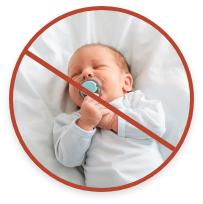


Making plenty of milk
Feeding your baby often helps them grow. It also tells your body to keep making milk. The more often your baby breastfeeds, the more milk your breasts will make. Most breastfeeding mothers can make plenty of milk for their baby.

Avoid nipple confusion
Avoid using pacifiers and bottles for the first few weeks after birth.

Keep baby safe and close by
Have your baby sleep in a crib or bassinet in your bedroom so you can breastfeed more easily at night. Research has found when a baby shares a bedroom with their parents, the baby has a lower risk of SIDS.

Learn your baby’s hunger signs
When babies are hungry, they are alert and active. Crying can be a late sign of hunger. It may be harder for your baby to latch if they are upset. Offer your breast when your baby shows signs of hunger, like:
Some babies will feed from both breasts at each feeding. Other babies only take one. Let your baby finish the first breast if they are still sucking and swallowing. Your baby will let go of your breast when they are finished. Offer your baby the other breast if they continue to show signs of hunger
Side-Lying Hold
This hold is useful when:
Cross-Cradle Hold
This hold is useful when:
Clutch or “Football” Hold
This hold is useful when:
Cradle Hold
This hold is useful when:
Laid-Back Hold
This hold is useful when: